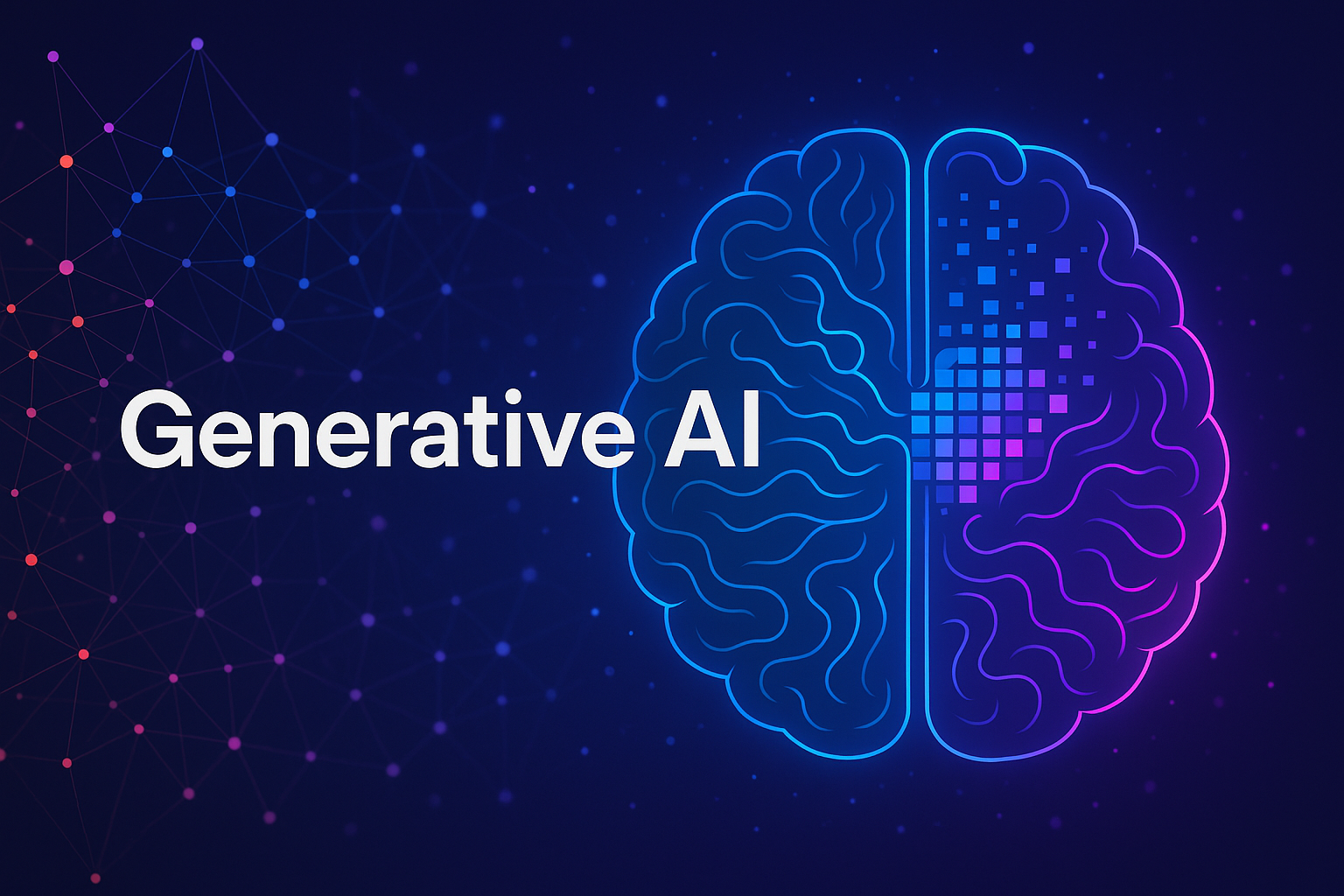
Generative AI is an innovative branch of AI that can generate software code, graphics, music, movies, and literature. Unlike traditional AI systems that classify or predict based on input data, generative AI produces entirely new data that resembles the training input. This transformative technology is reshaping industries, redefining creativity, and raising new ethical and regulatory questions.
What Is Generative AI?
Generative AI refers to systems that can generate content using models trained on massive datasets. These systems leverage machine learning, particularly deep learning, to create outputs that mimic human-created data. The most well-known types of generative AI include Generative Adversarial Networks (GANs), Variational Autoencoders (VAEs), and transformer-based models like GPT (Generative Pre-trained Transformer) and DALL·E.
How Does Generative AI Work?
Generative AI models are fundamentally trained on extensive datasets to recognize the patterns, structures, and characteristics inherent in the data. Post-training, the models can produce fresh data with like properties. The following are the predominant approaches employed:
- GANs (Generative Adversarial Networks): Introduced by Ian Goodfellow in 2014, GANs consist of two neural networks: a generator and a discriminator. The generator creates fake data, while the discriminator evaluates whether the data is real or generated. The generator improves over time as it learns to deceive the discriminator.
- VAEs (Variational Autoencoders): These models encode input data into a latent space and then decode it back to recreate the original input. They are useful for data compression and generation.
- ransformers: These models, such as OpenAI’s GPT, are trained on sequential data (like text) and can generate coherent and contextually relevant content. Translation, summarization, and content generation are just a few examples of the many areas where they have excelled.
Applications of Generative AI
The real-world applications of generative AI span across industries, from entertainment and healthcare to education and software development.
1. Content Creation
Generative AI is revolutionizing how we produce written and visual content:
- Text Generation: Tools like ChatGPT can generate articles, emails, marketing copy, scripts, and even poetry.
- Image Generation: Platforms like DALL·E and Midjourney allow users to create art, product designs, and concept visuals.
- Video Creation: AI models like Sora can generate high-quality videos from text prompts.
- Music Composition: AI can compose original songs or background scores with tools like Jukebox and Amper Music.
2. Software Development
AI-powered code editors like GitHub With Copilot, you can speed up code development while reducing error rates. They can auto-complete functions, suggest bug fixes, and generate entire blocks of code from natural language prompts.
3. Healthcare
Generative AI is being used to:
- Create synthetic medical data for training and research
- Generate drug candidates
- Predict protein structures (e.g., AlphaFold)
4. Education
Educators use generative AI to:
- Generate personalized learning materials
- Provide real-time tutoring and feedback
- Create quizzes, summaries, and lesson plans
5. Gaming and Virtual Worlds
AI is used to auto-generate:
- Characters, quests, and storylines
- Realistic environments and simulations
- Voiceovers and in-game dialogue
Benefits of Generative AI
- Creativity at Scale: AI can generate a limitless amount of content in various styles and formats.
- Time and Cost Efficiency: Reduces the need for manual content creation.
- Personalization: Enables creation of tailored experiences, products, and content.
- Accessibility: Makes complex tasks like coding or design accessible to non-experts.
Ethical Concerns and Challenges
Despite its advantages, generative AI comes with several risks:
1. Misinformation and Deepfakes
AI-generated images, videos, and text can be used to spread false information or impersonate individuals.
2. Bias and Fairness
Generative models often inherit biases from their training data, leading to outputs that reinforce harmful stereotypes or exclude marginalized groups.
3. Intellectual Property and Copyright
Determining the ownership of AI-generated content and the legality of training data is a complex legal challenge.
4. Jautious advancement. Future trends include:
- Multi-modal Models: AI that combines text, image, audio, and video capabilities in a single system.
- Real-time Collaboration: AI that works alongside humans in real-time creative processes.
- Regulation and Governance: New laws and standards to ensure ethical AI usage.
- Democratized Access: More user-friendly tools enabling anyone to harness AI’s potential.
Conclusion
Generative AI is a groundbreaking advancement in the field of artificial intelligence, empowering users to create original content at scale. With thoughtful integration and ethical guidelines, it holds the promise of enhancing human creativity, improving productivity, and transforming industries worldwide.
Frequently Asked Questions (FAQs):
Generative AI uses machine learning to generate new content based on patterns learned from existing data. It works using techniques like GANs and transformers to mimic and produce human-like outputs.
Some of the best tools include, among others, ChatGPT, DALL·E, Midjourney, GitHub Copilot, Runway, Adobe Firefly, and Sora.
Uses include content creation (text, images, video), software development, education, healthcare, gaming, and marketing.
Yes, but with responsible practices. It must be used ethically to avoid spreading misinformation, respecting privacy, and adhering to copyright laws.
While it may automate certain tasks, it will more likely transform jobs by assisting humans rather than replacing them entirely.
Basic users need prompt engineering and creative thinking. Advanced users benefit from understanding machine learning, programming, and data handling.
Yes, many tools offer free versions. However, premium features like high-quality output, faster processing, or business use often require subscriptions.
Start with free tools like ChatGPT or DALL·E. Practice crafting prompts, explore tutorials, and gradually experiment with different types of content generation.
Copyright issues, training data legality, and content ownership are ongoing concerns. Regulations are being developed globally.
Generative AI is expected to become more multimodal, collaborative, regulated, and accessible, playing a central role in how humans create and interact with technology.
Leave a Reply